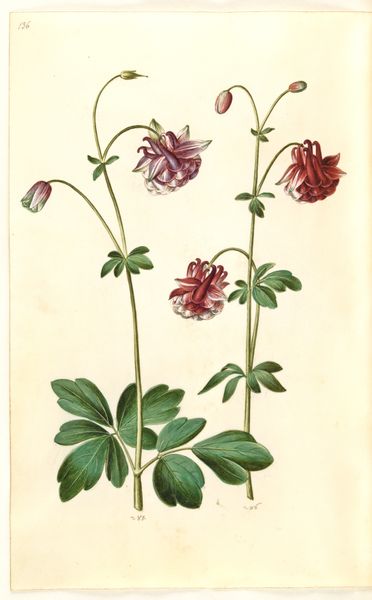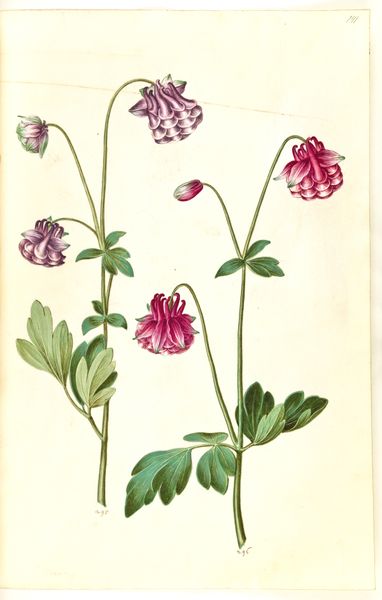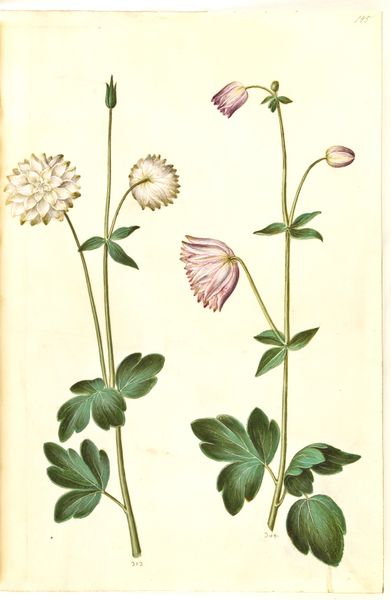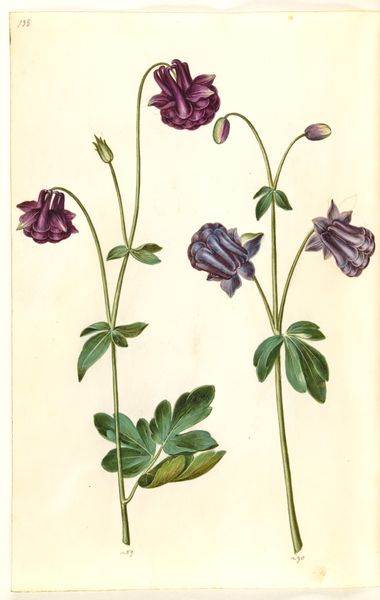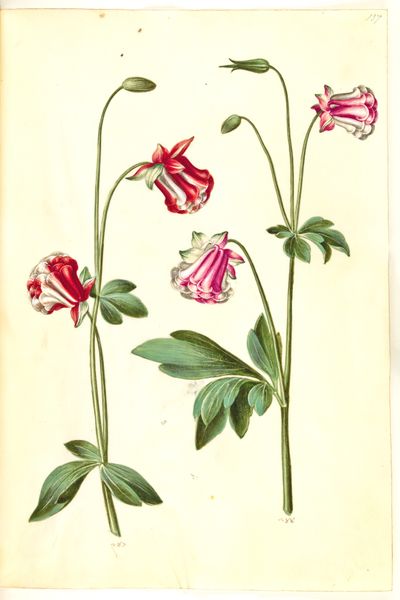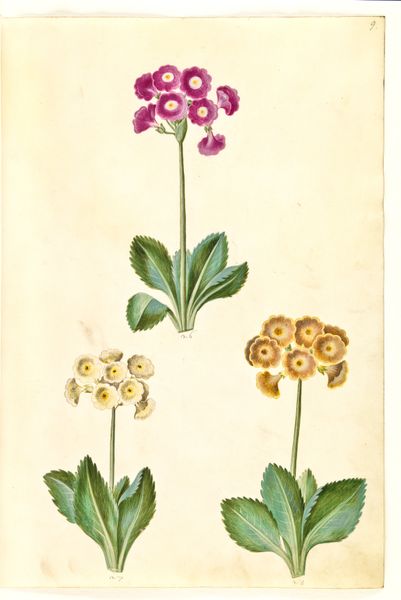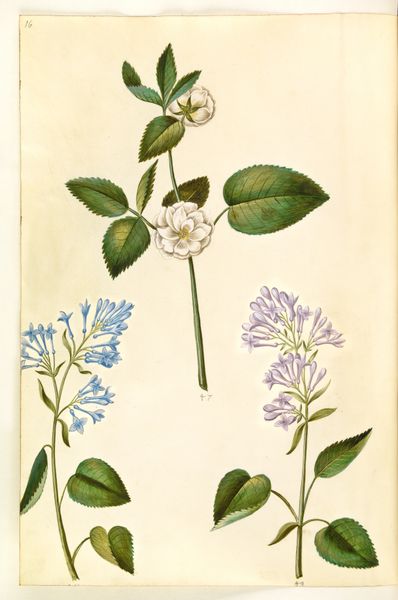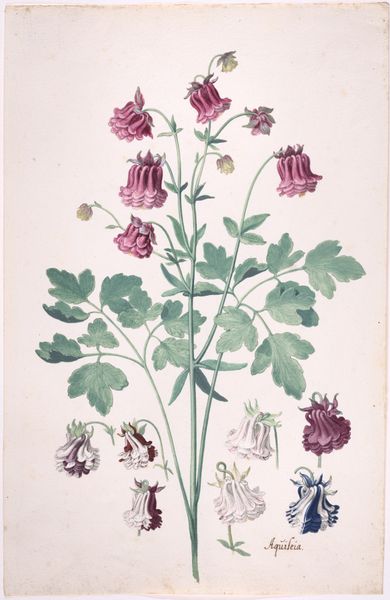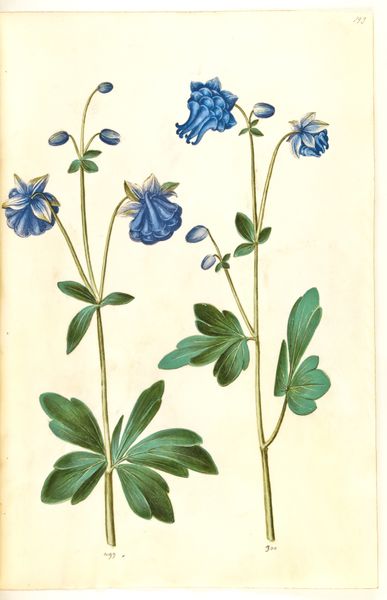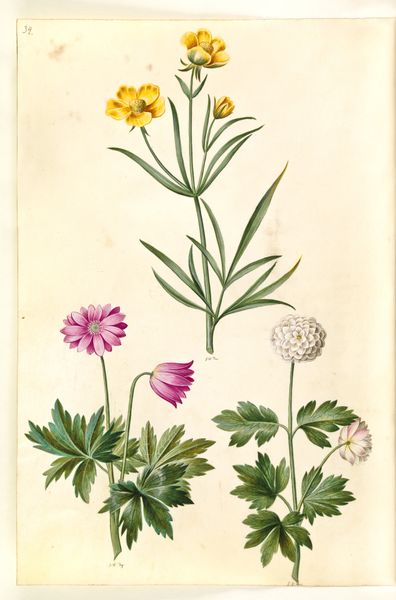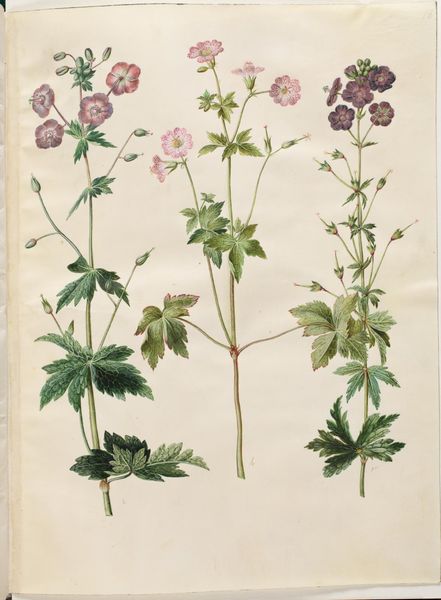
Aquilegia vulgaris (almindelig akeleje) 1635 - 1664
0:00
0:00
drawing, gouache, paper
#
drawing
#
dutch-golden-age
#
gouache
#
paper
#
botanical drawing
#
botanical art
Dimensions: 375 mm (height) x 265 mm (width) x 85 mm (depth) (monteringsmaal), 358 mm (height) x 250 mm (width) (bladmaal)
Hans Simon Holtzbecker made this botanical study of Aquilegia vulgaris around the mid-17th century, using watercolor and gouache on vellum. The success of this image lies in Holtzbecker's mastery of these media. With watercolor, he captures the delicate translucency of the petals, layering washes of pigment to build depth and form, and the opaque gouache lends body to the darker greens of the leaves, highlighting their texture and subtle venation. Holtzbecker painstakingly applied these materials to achieve the visual precision that was valued at the time. Such drawings of the period served both scientific and aesthetic purposes. They documented the natural world with accuracy, contributing to the burgeoning field of botany. But they were also prized as luxury objects, commissioned by wealthy patrons who sought to possess a microcosm of the natural world within their collections. Understanding the materials and processes behind this artwork helps us to appreciate its historical context. It blurs the line between science and art, revealing a moment when both disciplines were deeply intertwined, each enhancing our perception of the natural world.
Comments
No comments
Be the first to comment and join the conversation on the ultimate creative platform.
